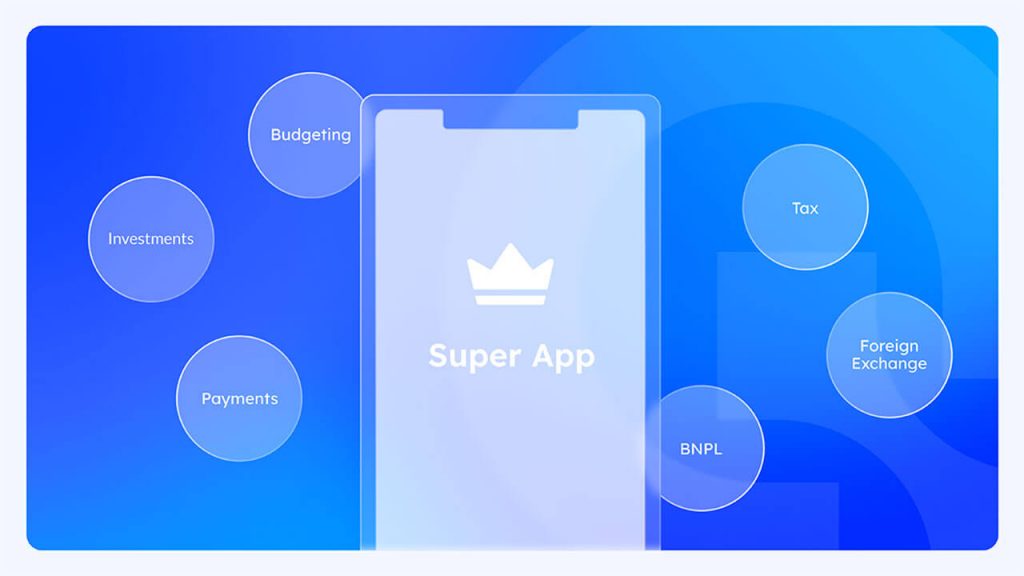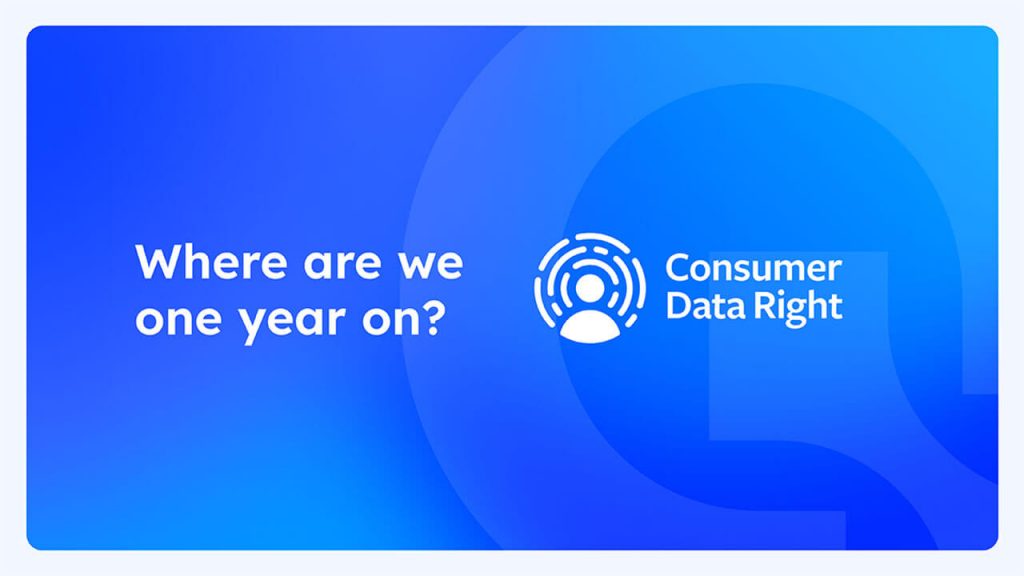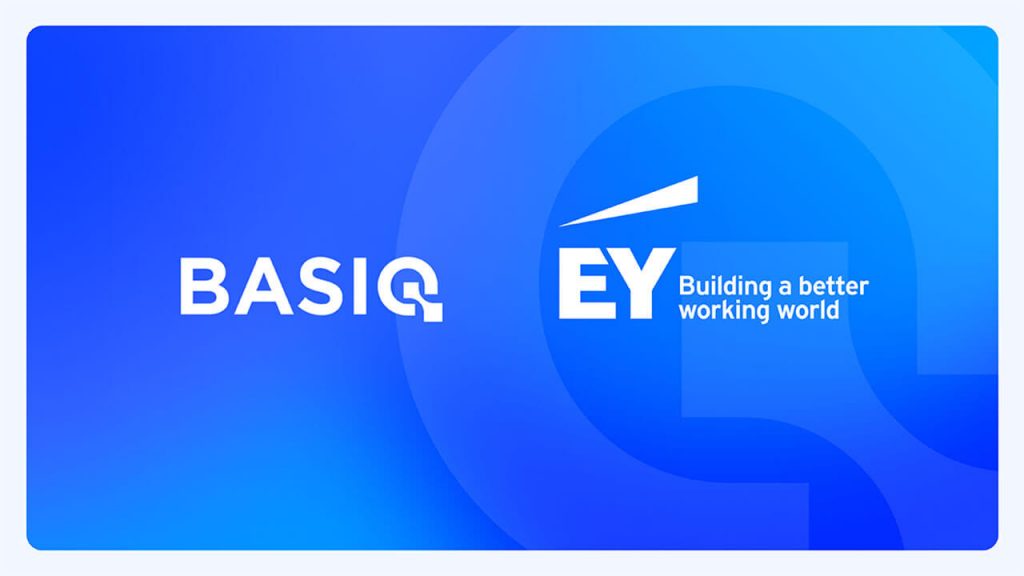Intro
The proliferation of financial technology products that do not constitute the definition of ‘credit’ is causing a widespread headache for credit bureaus and lenders alike. These products are often not reported to bureaus through regimes such as Comprehensive Credit Reporting (CCR) and are not deemed to be credit providers under the National Consumer Credit Protection Act (NCCP)1. This makes it difficult to properly assess a borrower’s risk and ability to repay when applying for traditional credit products, as their relationships with some fintechs do not appear on their credit report. In this week’s edition of Basiq Insights, we propose five potential scenarios that industry and regulation may take in order to properly assess credit worthiness amidst an ocean of financial technology products. So what is credit scoring, who are the players and how is the information asymmetry between bureaus and fintechs going to be alleviated?
Note before we start: this paper focuses on BNPLs and alternative credit providers who do not conduct credit checks. Many do, and that data is publicly available within the respective providers’ privacy policies.
Credit Scoring
Credit scoring is a mechanism whereby an individual is assigned a number, broadly in the range of 0-1000 that indicates the ability of a consumer (or business) to service their debt with a financial institution. Generally speaking, anything above 700 is a ‘good’ score, and anything less than 500 is deemed ‘high risk’2. This quantitative measure is based on a sophisticated algorithm, derived from a wide set of inputs, including, but not limited to: number of credit enquiries, length of time with a credit product and other indicators such as address and number of recent address changes.
Historically, bureaus would report on any negative impacts to your score, affecting your ability to repay debt – such as defaulting on a loan, or entering into 90-day arrears. As such, even if you repaid your credit card, mortgage or personal loan debts on time for years, you’d be punished for missing a repayment and your positive behaviour was ignored. Recent legislation saw the introduction of CCR – a data sharing regime that bolstered the existing inputs to a credit score by providing ‘positive’ insights – such as your repayment history across all of your credit commitments3. This enriched data set allowed for individuals and businesses to prove they have been managing their existing repayment schedules well (or poorly) and thus are more (or less) worthy of credit. This legislative change had far reaching implications for regulation, including the alteration of the Privacy Act, as well as ADIs, who had to build infrastructure to enable the sharing of data. Financial institutions were incentivised by the concept of reciprocity – you give rich CCR data, you get rich CCR data in return4.
Who keeps Score?
Australia’s three main credit bureaus are Experian, Equifax (formerly Veda) and Illion (formerly Dun & Bradstreet). Each of these bureaus are custodians of credit reporting data and the inputs and scoring mechanisms that remain their proprietary information (they offer a suite of other services, such as ID verification and credit score dashboards, but the focus of this piece is on credit scores themselves). Credit bureaus typically charge banks, lenders and fintechs each time they enquire on an individual’s credit worthiness. However, credit scores do not include information on a customer’s financial circumstances in terms of income and expenditure5.
From a lending perspective, all lenders under ASIC’s RG209 have to enquire on the customer’s financial circumstances to ensure that the credit product being applied for is “not unsuitable“6. All lenders follow two steps – one is a risk assessment (score) and the other is a servicing assessment (from application form data or screen scraping or open banking transactional data). It’s important to remember that bureaus are both something banks and lenders retrieve information from (a score or report) and also contribute toward (consumer financial data). This principle is known as ‘reciprocity’ and is used for bureaus worldwide.
Enter Fintech
Fintechs are moving rapidly in terms of product innovation, development and distribution, making it difficult for bureaus to keep up with not only the rate of technological change, but also the massive consumer choice that has arisen in Australia. The lack of data visibility for bureaus given the proliferation of financial technology products has left a large gap in terms of the availability of data to assess risk. Many new Fintechs – notably alternative credit such as BNPLs and early wage access / wage streaming companies – are dominating the Australian Fintech landscape, eating away at the need and desire for traditional credit cards6. This is hampering the bureaus’ core competency – the providers of data that can best assess a person’s likelihood to service their debt. A number of fintech companies fall outside of the definition of credit that is governed by the NCCP – so bureaus have no visibility of not only what BNPL products a consumer uses, but also how effective they have been in repaying their debts.
To put this in a more practical example, we have prepared a sample journey that an individual may undertake in the modern fintech economy and observe how the usage of new services that help individuals better manage their finances are misaligned with a traditional credit score measure.
User journey
Scenario: Take Alice – Gen Z, 23 years old, with multiple banking relationships, her Bank A account is used for savings, and Bank B account is used for everyday spending. Alice has used a BNPL since 19 years old and has no intention of changing. The idea of a credit card worries her as she doesn’t want to get into more debt than necessary. Alice also uses a Cash Flow app to help with personal finance management and bill smoothing. Alice has not missed a single BNPL debt, nor has she ever missed a repayment on her Cash Flow app.
Problem: When Alice applies for a loan for a new car via a bank, how can she prove that she is worthy of credit?
In this example, there’s no way for a bank to see any of her previous transaction history. There’s also no way to know about her outgoing repayment schedules with her BNPL or Cash Flow app. In other words, the bank has limited data to assess risk. The only way a bank can make an informed decision about her credit worthiness is down to looking at the amount of money in her savings and living expenses and compared to the Household Expenditure Measure benchmark (or HEM), unless they partner with an aggregator who can identify relationships with third party lenders.
Alternatively, imagine if Alice had used a Bank credit card to manage her money, and not any alternative credit providers. If Alice made every repayment on time – then under CCR the lender would be able to have visibility of all her repayments, as well as the credit limit and time with the credit provider. This would make the time-to-yes a lot quicker for Alice and it’s highly likely that the auto loan would be no issue for the Bank.
The shift here isn’t only generational but one of choice. Should Millennials and Gen Z be encouraged to take up credit in order to bolster their credit score? Or should they be free to choose the best product that suits them, even if it risks the fact they may not be able to get a loan in the future?
Neither answer to the above holds up in the current climate. The real answer is that there should be mechanisms in addition to a credit bureau in order to assess Alice’s credit worthiness that can provide her with the best experience while also rewarding her positive behavior. So, what could that look like?
Outcomes
There are five potential resolutions to the above scenario in order to alleviate the lack of visibility (data sharing) between emerging Fintechs and incumbents. We posit a number of possible outcomes to solve in this situation:

(1) Hard Regulation
Fintechs become regulated as credit and are forced to share data under CCR and to Bureaus.
Winners: Banks, Bureaus
Losers: Fintechs, Consumers
This scenario has been pushed by CBA CEO Matt Comyn, and is a popular view among banks7. This would see BNPL as a ‘credit product’ in the eyes of the NCCP Act, as well as a potential amendment to the Privacy Act. This would mean BNPLs are regulated under the NCCP and overseen by ASIC, reporting under the CCR regime, as well as requiring all BNPLs to conduct a credit check8. Inevitably this stifles the growth of BNPLs in Australia and also significantly impacts consumer choice – every BNPL you sign up to would count as a ‘credit enquiry’, which would appear on your credit report. Given consumers have more than one relationship with a credit provider, this would be a punitive measure. This would also require an alteration to the NCCP to classify alternative lenders as ‘credit products’, and incur significant operational overhead for the respective providers9. The only benefit is the sharing of positive repayment behaviour being beneficial to bolstering a consumer’s score.
Overall, it can constrict the funnel of customers that can use BNPL, and punishes those who want to try different providers – as each enquiry will appear on one’s credit report. This is not the case if the enquiry is a ‘soft’ or ‘simple’ check, as opposed to a ‘hard’ enquiry which appears as a mark on your credit report. Multiple hard enquiries currently damage your score because historically it was a sign of credit stress – under this new regime the weight attached to having multiple BNPL enquiries, if not correlated with arrears, will require bureau scores to be redeveloped and not carry negative points in the new scorecard. Consumers should not be negatively impacted for downloading and trying a new fintech app, however there is possibility to use bureaus for soft checks. For that reason, it is unlikely that this outcome will occur, at least in the short term.
(2) Enriched Credit Scoring
Enriched credit scoring companies can provide a holistic view of a consumer’s finances using a sophisticated algorithm, using a number of data points outside of just product behaviour.
Winners: Bureaus
Losers: Consumers
There’s a likelihood that we see enriched credit scoring as the new kid on the block. Enriched credit scoring involves deploying a credit risk engine (likely via an API) that can take a set of pre-existing inputs and produce a credit score for a consumer. These solutions can be a value added service that sits atop bureau data – essentially a risk engine would have to use a wide array of data in addition to what is currently available via a bureau. Alternatively, some can use disparate data sources that do not rely on credit bureau data.
Overall, this is likely to emerge in Australia with the rise of open banking and I see this as a fertile market for disruption. Although it provides additional data to assess risk, and alleviates any operational overhead for BNPLs and Credit Bureaus, a consumer is still not explicitly rewarded for their positive repayment behaviour. Current privacy laws also make it difficult to mix disparate sources of data for the purposes of lending. Using data to identify a person’s risk in a personalised manner (e.g. aligning with both the need the product solves and the data to support the repayment worthiness) is extremely powerful. However, there is little in the market at the moment that reflects this. The most recent example would be illion’s Transaction Risk Score (iTRS), allowing illion’s customers to improve their credit management with more informed underwriting and pricing11.
(3) ‘BNPL Score’
Fintechs create their own score – such as ‘BNPL score’ – to which they white-label and expose to parties enquiring about their position – and charge accordingly.
Winners: Consumers
Losers: Bureaus
Given the rich data that exists within Fintech providers, there’s a likelihood this data could be analysed in order to produce a ‘risk score’ specific to a particular institution. A BNPL, for example, could produce a ‘BNPL Score’ or work with other BNPLs to create an industry-wide ‘BNPL score’. This would help mitigate the issues around data visibility, without having to share raw data to financial institutions. The mechanism could also be monetised, as bureau scores are – e.g. if a lender wants to get a ‘BNPL score’, they could enquire to a BNPL bureau and revenue shared across the profits. Although fintech companies are producing their own scoring mechanisms, such as OnDeck’s ‘KOALA score’ for SMEs, there is nothing in the market that offers this as a white-label solution as yet12.
The massive commitment to coordinate a data sharing regime, conformance to CDR consent standards, as well as quantitatively measuring a user’s propensity to repay among providers, is a gargantuan (and costly) exercise. However, there is a likelihood that white-label BNPL scoring emerges as a new style of financial technology product. The difficulty here is that consumers can consent to data being shared but overall a limited number of fields are available under current regulation as per the Privacy Act (which overrides consumer consent). In addition, standardising the scores across industry becomes an increasingly difficult challenge as BNPL dominates a number of different sectors and appeals to a wide range of consumer needs.
(4) Open Banking data
Open Banking data is increasingly used by Financial Institutions to identify a consumer’s current financial position and liabilities outside of bureaus, enriching their internal risk engines.
Winners: Consumers, Fintechs
Losers: Bureaus
The value of open banking data is its richness – it tells us about the way the consumer spends, saves and manages their finances. It can also go as far as identifying the merchant of where the transaction took place, discern a consumer’s income and also identify which alternative finance platforms a customer has used. See below a comparison of open banking transaction data, negative bureau data and CCR data:

Image 2 – Data availability matrix
By consuming open banking data, financial institutions can input this into their own risk engines and perform a ‘DIY’ approach. That is, set their own risk appetite based on either the number of repayments a person has made with a specific provider, as well as the number of providers a user has shopped with. This removes the need for reporting under the CCR regime, as the insights can be derived from raw data.
The advent of open banking makes this process exponentially easier, as it can be performed with an insights analysis on top of user-consented data. Consumers can be incentivised to share this data with the promise of a better score, while lenders can get an idea of how many providers the user has, or has been with. In a world where financial technology products are everywhere, especially those taken up by Gen Z, this structural shift away from bureaus signals an immense change to the credit reporting landscape.
In addition to the richness of the data that Open Banking data provides, it also has another core feature which is quite different to other data sources – the frequency by which this data is updated. Unlike traditional data assets such as credit enquiries, bank transactions occur whenever an individual carries out a payment of any form of funds transfer. The velocity by which the data updates, combined with an on-going consent model (where an individual consents to ongoing access to their financial data) can become a powerful instrument for risk assessment.
Lenders often do a one-off check to determine a consumer’s ability to repay debt. With ongoing consent, and an active link to a consumer’s transaction data, a lender can better identify a user’s financial position – whether it be predicting delinquency or detecting an increase in income (for example). Experience wise, if a delinquency is predicted, lenders can proactively reach out and provide financial support and assistance – leading to lower bad debts and a better customer experience.
With an ongoing consent model, richer data sets are available for lenders to determine their financial position – and also, predictive analytics can be used to understand when someone may run into hardship (e.g. an increase in ‘risky’ transactions). This requires no change to existing legislation, can be accelerated via open banking pipes and allows for a frictionless customer experience. This solution is incredibly powerful, and if productised (and white-labelled), has the potential to disintermediate credit bureaus through a highly personalised score.
(5) No change
The current climate continues without any change.
Winners: Fintechs
Losers: Consumers, Bureaus
The current information asymmetry between BNPL repayment behaviour and credit bureaus is not sustainable in the long run. Consumers who may use BNPL services are not rewarded for their positive behaviour. Similarly, it makes it incredibly difficult to build up a credit score over time. Bureaus do not benefit either as they have no visibility of the data being collected by financial technology companies.
However, it currently benefits BNPL providers as they can rely on their own sophisticated risk engine in order to manage, assess and service risk and debt. The regulatory body, ASIC, has not provided any indication that BNPL should be regulated13. Instead, the industry self-regulation model has proved to be the way forward. Given some fintech providers conduct assessments without checking a credit bureau, there will need to be better measures in place to ensure that consumers can properly service their debt obligations – from both a PR, consumer experience and responsible lending point of view .
On the one hand, there is the concept of ‘caveat emptor’ – or buyer beware – whereby the onus falls on the consumer to ensure they are receiving funds responsibly. So much so, the Morrison Government has proposed a relaxation to the responsible lending laws to shift the burden of responsibility onto the consumer14. However, this has been opposed in Parliament and is a 50-50 chance to succeed as a policy measure (it has been passed in the lower house, but is currently one vote short in the Senate)15.
Therefore, there needs to be measures in place to prove that a fair and equitable risk assessment has been conducted on a consumer, outside of an instant approval with the opportunity for consumers to increase their limits as repayment schedules are completed with a single provider. Using an array of data, powered by open banking, there is tremendous value in risk calculations outside of the single relationship with a provider. A notable example in a parallel industry is Insight Data Solutions – a property valuation company – which uses hedonic pricing to determine a property’s valuation.
Summary
Overall, it is clear that the current information asymmetry between alternative credit providers and BNPLs is not a sustainable model. Hard regulation into BNPL is not the solution. Although the positive repayment behaviour is beneficial to consumers, it comes with a significant overhead for BNPL providers. While it is likely that an enriched credit scoring solution will encounter some regulatory headwinds, such as allowing informed decisions to be made about a consumer’s risk (utilising multiple data points powered by open banking), there is still a lack of benefit to a consumer in terms of recognising their positive repayment behaviour.
The likely outcome is that BNPL providers will use Open Banking data to assess risk, in addition to using their own risk engines to determine credit worthiness. Using multiple data sources via Open Banking to inform risk allows for the personalisation of a credit score, as opposed to a ‘one-size fits all’ approach.
An individual’s banking data can be used to determine their previous, current and future debt obligations. If this were to be productised in an industry-agnostic manner, it becomes an incredibly effective tool. Checking a user’s transactional account data and running affordability assessment on it allows for a fair and equitable financial system, removes the burden of operational overheads and most importantly, provides consumers with a wide range of choice – which is increasingly important in a highly competitive Australian fintech landscape.
References / Supported Reading
- https://www.legislation.gov.au/Details/C2017C00196
- https://www.finder.com.au/equifax-score
- https://www.mycreditfile.com.au/faq/what-comprehensive-credit-reporting
- https://aicm.com.au/news-resources/articles-news/principles-reciprocity-and-data-exchange/
- https://www.oaic.gov.au/privacy/credit-reporting/
- https://asic.gov.au/regulatory-resources/credit/responsible-lending/
- https://www.afr.com/companies/financial-services/time-for-bnpl-regulation-has-arrived-comyn-20210415-p57jgg
- https://download.asic.gov.au/media/4947835/rep600-published-28-11-2018.pdf
- https://asic.gov.au/about-asic/news-centre/find-a-media-release/2020-releases/20-280mr-asic-releases-latest-data-on-buy-now-pay-later-industry/
- https://www.experian.com/consumer-products/score-boost.html
- https://www.illion.com.au/risk-marketing-solutions/open-data-solutions/
- https://www.oaic.gov.au/privacy/privacy-for-organisations/credit-reporting/
- https://piperalderman.com.au/insight/the-dl-on-bnpl-asics-update-on-the-buy-now-pay-later-industry/
- https://www.canberratimes.com.au/story/7221873/lending-laws-might-be-changing-heres-what-that-means-for-you/
- https://www.afr.com/politics/federal/pauline-hanson-rejects-plan-to-scrap-responsible-lending-laws-20210519-p57tam
Article Sources
Basiq mandates its writers to leverage primary sources such as internal data, industry research, white papers, and government data for their content. They also consult with industry professionals for added insights. Rigorous research, review, and fact-checking processes are employed to uphold accuracy and ethical standards, while valuing reader engagement and adopting inclusive language. Continuous updates are made to reflect current financial technology trends. You can delve into the principles we adhere to for ensuring reliable, actionable content in our editorial policy.




